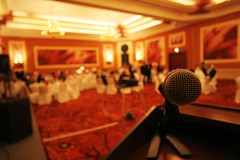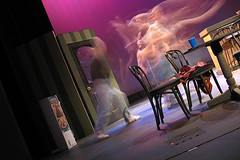I was an honored to speak at the West Michigan Day of .NET (WMDoDN) last weekend. I did two new talks, even though only one of them was scheduled. Brian Prince had been doing a great “Soft Skills, Not Just for Humans” talk for a lot of different user groups and Day of .NETs. It’s a talk that’s been met with great success and acclaim. It’s point is to help the attendees grow in their careers as much as they do in their technology space. It’s a great session and I wish that I had thought of it first. Brian, very unfortunately, got sick at the last minute and couldn’t make it so I pitched in and gave his talk. It was a lot of fun. As Dan Rigsby points out in his blog post, I wasn’t as polished as Brian was but I did a decent job. I really need to hire Dan to come take notes in all of my presentations – check out the notes he took in mine and then go read the rest of his posts, like the ArcReady post and so on.
Since it’s my presentation – I don’t feel bad pasting Dan’s notes here (The sub bullets are from me in this post):
- Mentoring: Always have a mentor. In fact get 3+. Josh attended the toastmaster’s club to find speaking mentors
- I’ll add here that this is the #1 tip that you can take away.
- Manage your Career: You are your business. Your employer just happens to be the person paying you to do your job right now.
- That quote was from Dianne Marsh
- Creativity: Like myself Josh doesn’t have a CS degree and it does give us a creative edge because we think outside of the box. This is true for everyone. Stay creative and think in other ways. Keep a log or use something like OneNote or a notepad.
- I use personal WIKIs. Got that tip from Jim Holmes (no relation but I’d claim him if I could)
- Brain Storming: Josh asked the question, “If you have an infinite supply of bricks, how would you raise money for your user group, school, or church”. The audience threw out some of the standard responses, but
- 3 Illegal Topics to Talk About: Sex, Politics, and Religion – don’t talk about these at work, just don’t do it, unless the setting is totally appropriate.
- AMEN!
- Don’t Assume all People Above you are Idiots: Sometimes they aren’t the smartest people, but there is a reason they have their position. They are bringing something to the table and at the very least have power and control.
- Communication Skills: Communicate like a human, not like an alien. Know your audience: geek talk is ok only if all people are geeks.
- Know when to say “I don’t know”: It’s ok not to know everything, and if you give wrong answers, you lose all respect. Don’t be an encyclopedia, be the index.
- Ask Open Ended Questions: If people just answer Yes/No you never really learn much
- Don’t Take Reactions Personally: People don’t always mean what you think. Especially in things like emails. Some people come off more rigid than others as well.
- Be an Active Listener: Don’t have distractions, ask smart questions, don’t multi-task in your head. Take what a person says and rephrase it back to them, and if they can confirm that, then you can answer the question. Also avoid filler words, enjoy the silence.
- Take Notes: Notes don’t have to be a distraction, but write down things as much as you can.
- Tape Yourself: learn to find the filler words in your presentations and how you can improve yourself.
- Avoid Bad Language: There is no need for it.
- Integrity & Honesty: always tell the truth and remember that its hard to get respect back.
- Everything you know today will be obsolete in 2 years: which is true from a technology standpoint, but soft skills will always be with you. So eat like a bird and poop like an elephant.
Again, thank’s Dan for those great notes.
After that, I did my Architecting for the RIA which morphed into a best practices talk. It was the first time that I’ve done that talk, but I really dig it so you should expect to see it more often. I’ll get the slides posted relatively soon.
Michael Eaton did a walk-through of LightReader which is a Silverlight RSS Aggregator that he and I are working on. To date I’ve given a lot of architectural advice, but I’m planning to spend some time digging in and helping build out the skinning and so on over the next couple of weeks. Feel free to pitch in.
It was great to see all the enthusiasm in the past couple of Day of .NETs that I’ve been to. I love this community and how it’s grown over the past 6 years that I’ve been active in it. (Wow, has it really been 6 years????)




 Project Name:
Project Name: 

